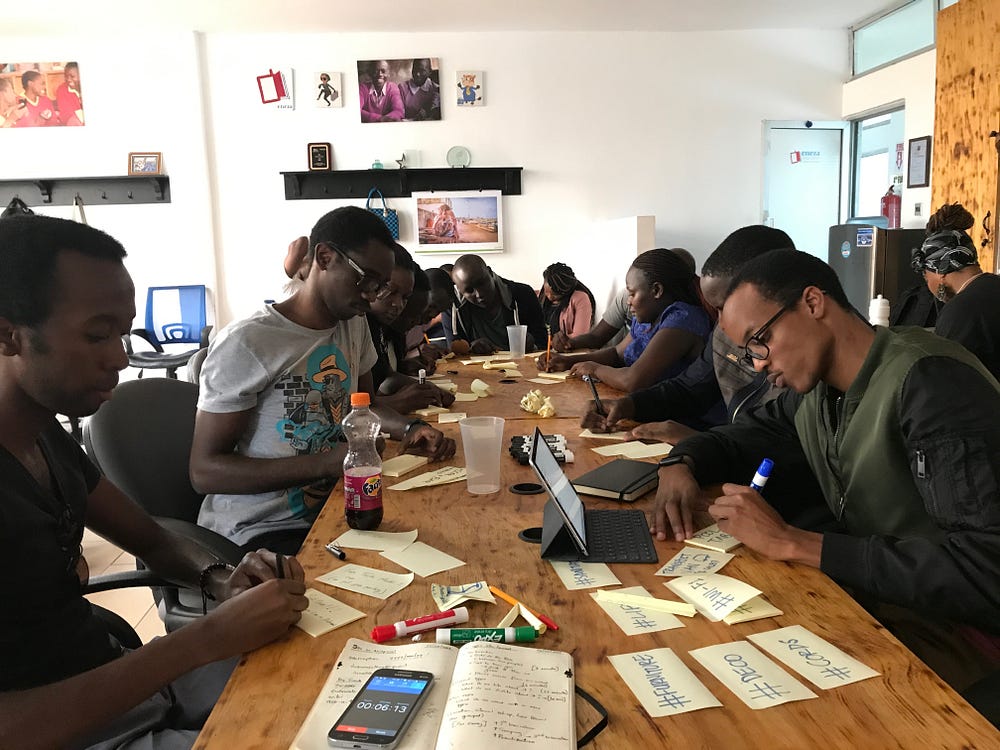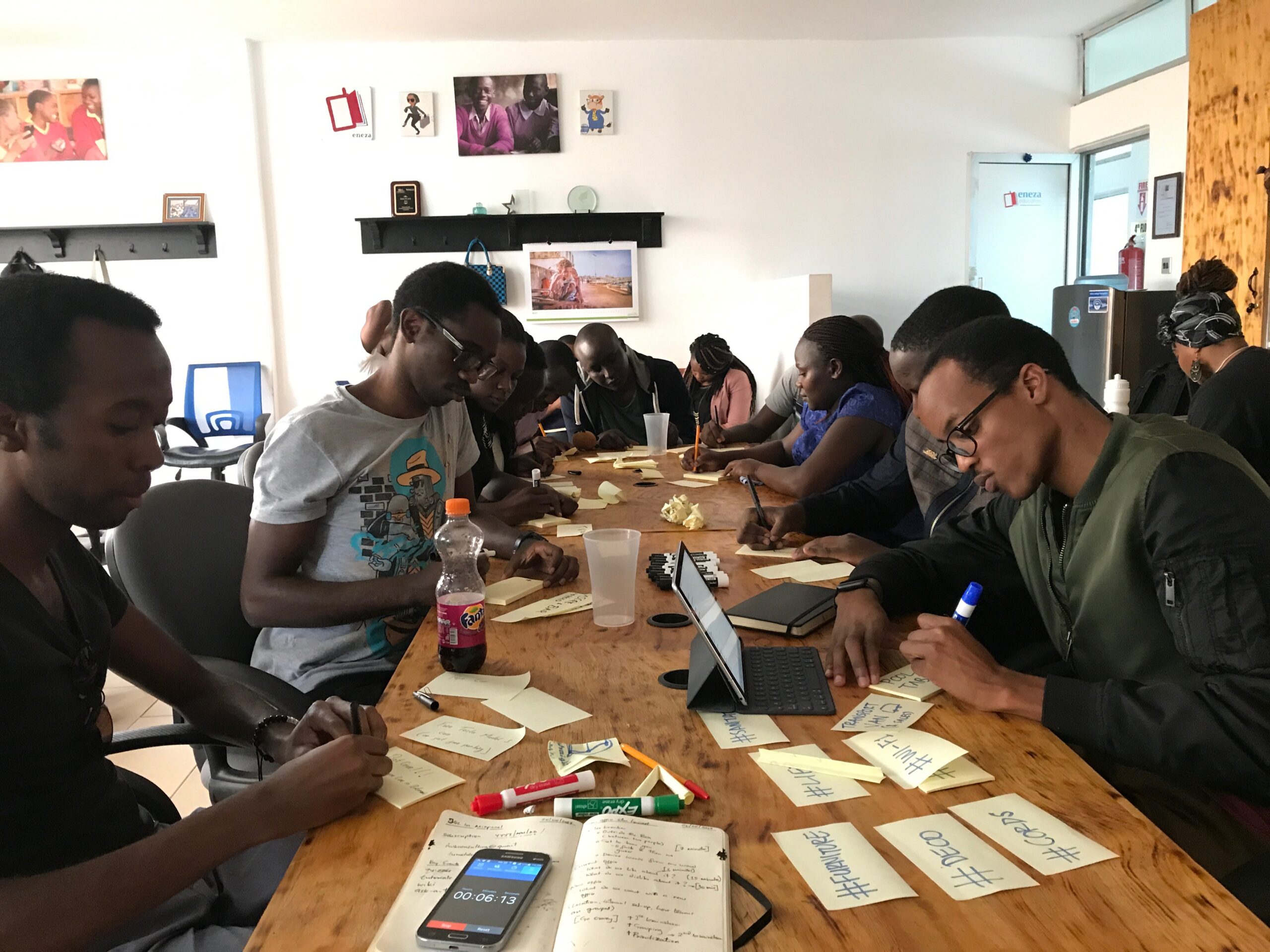So how does it feel to work for an ed-tech startup? More importantly, how does it work out for someone (me) who never imagined he would work in the ed-tech sector. The short and sweet — I was wrong.
Ed-tech is one of the most exciting spaces to work. This is particularly true in Africa as education is still the best option for improving livelihoods. I have witnessed this first-hand as I come from a relatively young family. My father paid his own school fees as at that point his father didn’t see the value of taking a child to school. I was the first in the extended family to have his fees paid for. This opened a multitude of opportunities for me. I have observed the same pattern amongst many families from where I come from.
I digress. Let us go back to the reason I am penning this post. In my last post, I promised to share my product management journey at Eneza. The interesting thing with product management — many organizations can do without a product manager. Only a good product manager will show that the role was necessary. For me, it is too soon to come up with the verdict and so let us park that conversation for now. Instead, let me share with you what my target for the first three months was and what I have achieved so far.
Getting started isn’t easy
In any organization, cross-functional roles tend to be the hardest. As a product manager, you have to work with different people and departments to achieve your goals. As a result, when you first join it is difficult to get started. An easier way to go about it is to develop pillars that will ensure you are not just busy but productive. Starting out, I identified four key pillars:
- Do we have a clear and compelling product vision, strategy, and roadmap?
- How are we using the data we collect?
- How do we approach User Experience (UX)?
- Are the different teams set up well to achieve our vision?
I will quickly break this down below and show how it shaped my approach for the past three months.
The product vision & strategy
As a startup, how do you ensure you don’t turn into a feature factory? How do you ensure what you build is not entirely driven by short-term gains? More importantly, as a product company, how do you ensure you don’t become a consultancy company that dances to the tune of the highest paying customer?
A compelling vision with a clear strategy to achieve the vision goes a long way in ensuring the questions I shared above are answered. A thematic roadmap for 6–12 months is a good way to break down the strategy into actionable items. It is not enough to have this; it needs to be communicated well to the entire team.
We will be carrying out a product vision and strategy session early in July.
Data
Data is sexy. It is the new oil of the digital economy, after all. Eneza started out back in 2012 and has accumulated a lot of data! At the moment, Eneza has 2.2 million unique learners just in Kenya alone. On average, there are 150k monthly active users. So far more than 10 million questions have been answered on the platform and 352 million messages exchanged. With such data, you can do a lot.
In order to make sense of such volumes of data, you first need to make sure you collect it well, analyze it, and present it in a way that allows people to make data-driven decisions. When I joined I spent a significant amount of time looking at different product analytics tools that would complement Eneza’s internal data dashboard.
We ended up choosing Mixpanel as its offering was superior compared to the other options we looked at. It is quite pricey and so we can’t use it forever. However, it allowed us to quickly visualize the data in a way that allowed faster and better data-driven decisions. I will write in detail about data and key metrics in a future post.
User Experience (UX)
Despite the increased focus on the importance of user experience, it is interesting that only a few companies actually talk to their customers. For most startups, UX is a key pillar in the beginning but as the company matures UX becomes less important. Data and feedback from customer care then become the only source of feedback.
Whilst we were using data and customer care feedback, we had lost the art of talking to our users to understand them better so that we could build a truly compelling product. Unfortunately, I haven’t gone out in the field just yet. This is something I hope to change within the next 3–4 weeks. On the bright side, we have carried out a couple of ideation sessions in the office. The most interesting one was a session we had to think through a new office. Instead of creating a committee to think through this we saw it fit to involve the entire team.

This is an easy way to introduce your team to design thinking concepts.
The Team
Where do I even begin? It is too long a topic to summarize in a post that covers many other things. For a product to succeed the different teams in an organization need to have a shared goal and clarity on how each department contributes and determines whether the product succeeds or not. Additionally, the different teams should appreciate how to working together is better than working in silos. I had already seen how silos can work to the detriment of organizations. It creates fiefdoms and turf wars.
As a product manager, your chances of success are lower in an organization that has many silos. How do you go about this especially when you are new? Eneza is not as siloed as some companies I have worked with before. It was easier to create cross-functioning teams to tackle some of the most pressing issues I faced.
That is it for today’s post. I still have a long way to go before my efforts can truly bear fruits but it is a good start. What are your thoughts? If you have been in a similar situation, how did you approach this? Feel free to share your comments below or hit me up on Twitter.

